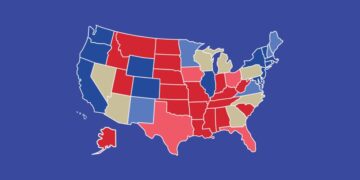Banks play a pivotal role in the modern economy by not only safeguarding and transferring money but also by engaging in the creation of money. This process, often referred to as “money creation”, involves intricate mechanisms that are fundamental to understanding the dynamics of the financial system. While coins and bills may seem to materialize from thin air at the ATM or on digital wallets, the true wizardry of money creation occurs within the walls of banks. In this article, we will delve into the technical aspects of how banks create money and the implications of this process.
Fractional reserve banking
At the core of money creation lies the concept of fractional reserve banking. This financial model permits banks to retain only a fraction of their total deposits as reserves, allowing them to lend out the majority of the funds they receive. The reserve requirement, set by central banks, establishes the minimum percentage of deposits that banks must keep on hand. For instance, if the reserve requirement is 10%, a bank can lend out 90% of its deposits.
This fractional reserve system, while essential for liquidity and lending, serves as the linchpin for money creation. When a customer deposits $1,000 into a bank, the bank must reserve a fraction, say $100, and can subsequently loan out the remaining $900. The recipient of this loan then deposits the $900 into another bank, initiating a chain reaction.
The money multiplier effect
The money creation process is amplified by what is known as the money multiplier effect. This effect results from the fact that the money lent by banks is often redeposited in the banking system, enabling further rounds of lending. As the initial deposit cascades through the banking system, each subsequent bank follows suit, reserving a fraction and lending out the rest. This iterative process amplifies the initial deposit, creating new money with each lending cycle. The money multiplier (MM) can be calculated using the following formula:
MM=1/RR
RR represents the reserve ratio, expressed as a decimal. This formula illustrates how an initial deposit can lead to a larger increase in the money supply through subsequent rounds of lending. The magic begins with a simple deposit. When a customer deposits money into a bank, that money doesn’t just sit idle. Instead, the bank utilizes a multiplier effect to expand its lending capacity. Let’s illustrate this with an example:
- Initial deposit: You deposit $1,000 into your bank account.
- Reserve requirement: The bank is required to hold only a fraction of this deposit in reserves, typically set by central banks. For instance, with a reserve requirement of 10%, the bank must retain $100 and is free to lend or invest the remaining $900.
- Loan expansion: The bank, now armed with the $900 excess, issues a loan to a borrower. This borrower, in turn, spends the loaned money, injecting it back into the economy.
- Deposit recirculation: The recipient of the loan deposits the money into their bank account, creating a new deposit of $900. Now, the second bank follows the same process, holding 10% in reserve ($90) and lending out the rest ($810). This cyclical process continues, leading to a multiplier effect on the initial deposit.
Theoretically, the process can continue until the total money supply becomes several times larger than the original deposit. In our example, the total money created (using the money multiplier formula) would be $1,000 / 0.1 = $10,000.
The role of central banks
Central banks, as the architects of monetary policy, play a pivotal role in regulating and controlling the money creation process. Central banks can influence money creation through tools like open market operations, discount rates, and reserve requirements.
1. Open market operations
Central banks engage in open market operations, buying and selling government securities to control the money supply. When the central bank purchases securities, it injects money into the system, increasing the overall money supply. Conversely, selling securities withdraws money from circulation.
2. Discount rates
The discount rate, set by the central bank, is the interest rate at which commercial banks can borrow funds directly from the central bank. By adjusting the discount rate, the central bank influences the cost of borrowing, affecting the willingness of banks to lend and the overall money supply.
3. Reserve requirements
Adjusting reserve requirements is a direct way for central banks to control the money creation process and therefore influence the pace and extent of money supply expansion or contraction. By increasing or decreasing the required reserves, central banks can influence the amount of money banks can lend and, consequently, the overall money supply. A lower reserve requirement accelerates the money multiplier effect, fostering economic growth but heightening the risk of inflation. Conversely, a higher reserve requirement may curb inflation but can impede lending and economic activity.
The role of commercial banks
Commercial banks are at the forefront of the money creation process. When a bank makes a loan, it essentially creates new money. This might seem counterintuitive, but it stems from the fact that bank deposits are considered money in the modern economy. When a bank issues a loan, it credits the borrower’s account with the loan amount. This creates a new deposit, effectively increasing the money supply. Simultaneously, the borrower, now armed with the loaned funds, may spend or redeposit the money, setting off a chain reaction of further lending and deposit creation.
The digital era
In the contemporary landscape, the rise of digital currencies and electronic transactions has reshaped the dynamics of money creation. Electronic deposits and online transactions have reduced the reliance on physical cash, prompting central banks to reconsider their traditional tools. Central bank digital currencies (CBDCs) represent a paradigm shift, offering a direct channel for monetary authorities to influence money creation. By controlling the digital currency supply and implementing smart contracts, central banks can fine-tune the money creation process with unprecedented precision.
Risks and challenges of money creation
While fractional reserve banking is a powerful mechanism for expanding the money supply and stimulating economic activity, it comes with inherent risks. The interconnected nature of the global financial system means that a failure in one part can have cascading effects.
1. Bank runs
The fractional reserve system relies on the confidence of depositors. If a significant number of depositors lose faith in a bank’s ability to meet withdrawal demands, it can trigger a bank run, potentially leading to a financial crisis. Striking the right balance between liquidity, lending, and risk management is a perpetual challenge for financial institutions and regulators alike.
2. Economic instability
Excessive money creation can lead to inflation if the growth in the money supply outpaces the growth of goods and services in the economy. Central banks must strike a delicate balance to avoid both deflationary and inflationary pressures.
3. Inflation
Excessive money creation can lead to inflation, eroding the purchasing power of a currency. Central banks must strike a delicate balance to prevent inflation from spiraling out of control.
4. Shadow banking system
The shadow banking system, comprising non-bank financial entities, adds complexity to the money creation landscape. These entities engage in similar lending practices without being subject to the same regulatory constraints as traditional banks, creating potential blind spots in the oversight of money creation.
Conclusion
The creation of money by banks is a complex interplay of regulatory frameworks, economic principles, and trust. Fractional reserve banking, guided by central bank policies, is a mechanism that allows for the expansion of the money supply, fostering economic growth. However, the risks and challenges associated with this process highlight the delicate balance that financial institutions must navigate to ensure stability in the ever-evolving world of finance. Understanding these mechanisms is crucial for policymakers, economists, and individuals alike as we navigate the intricacies of the modern monetary system.

































































































































































































